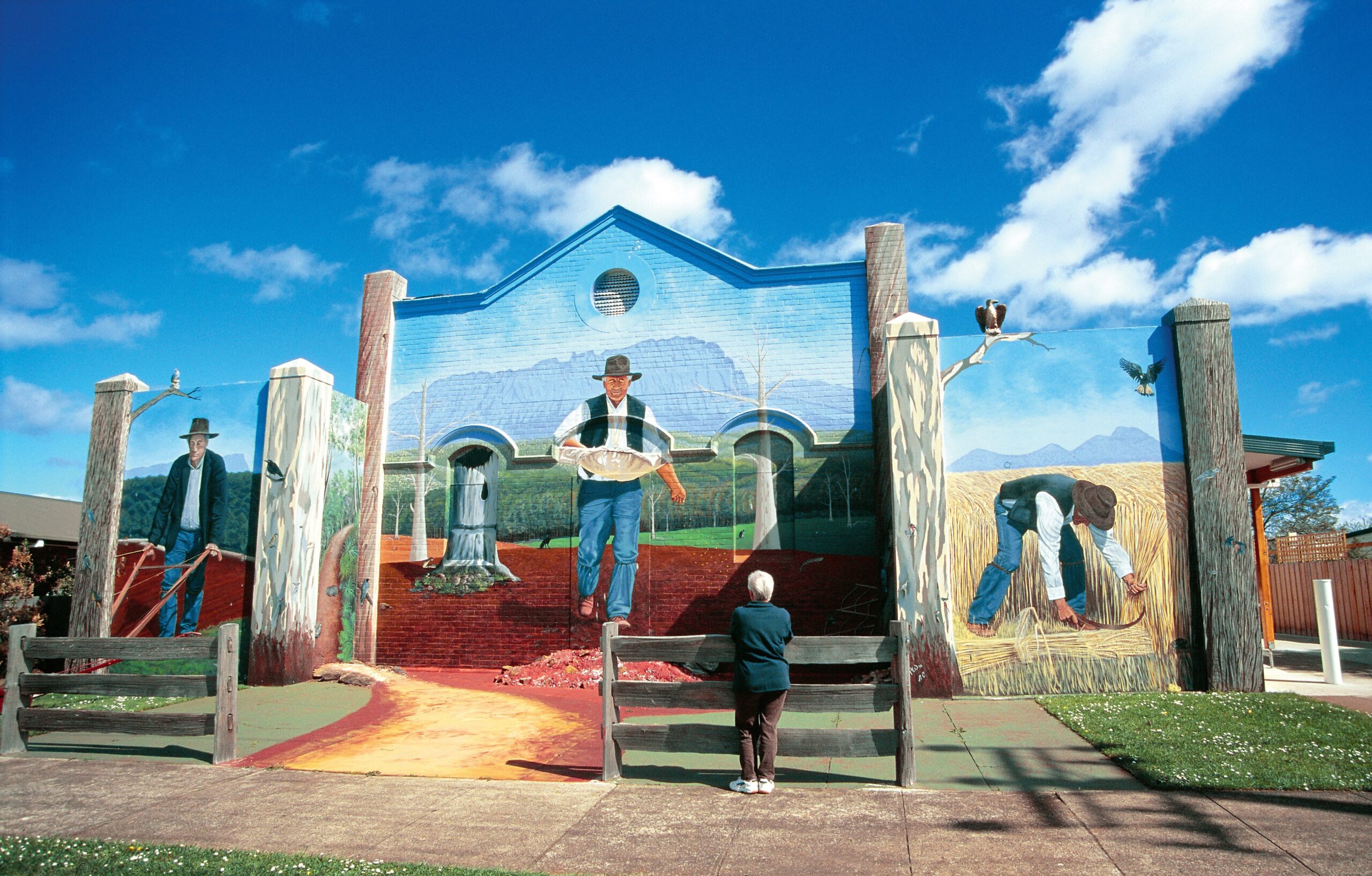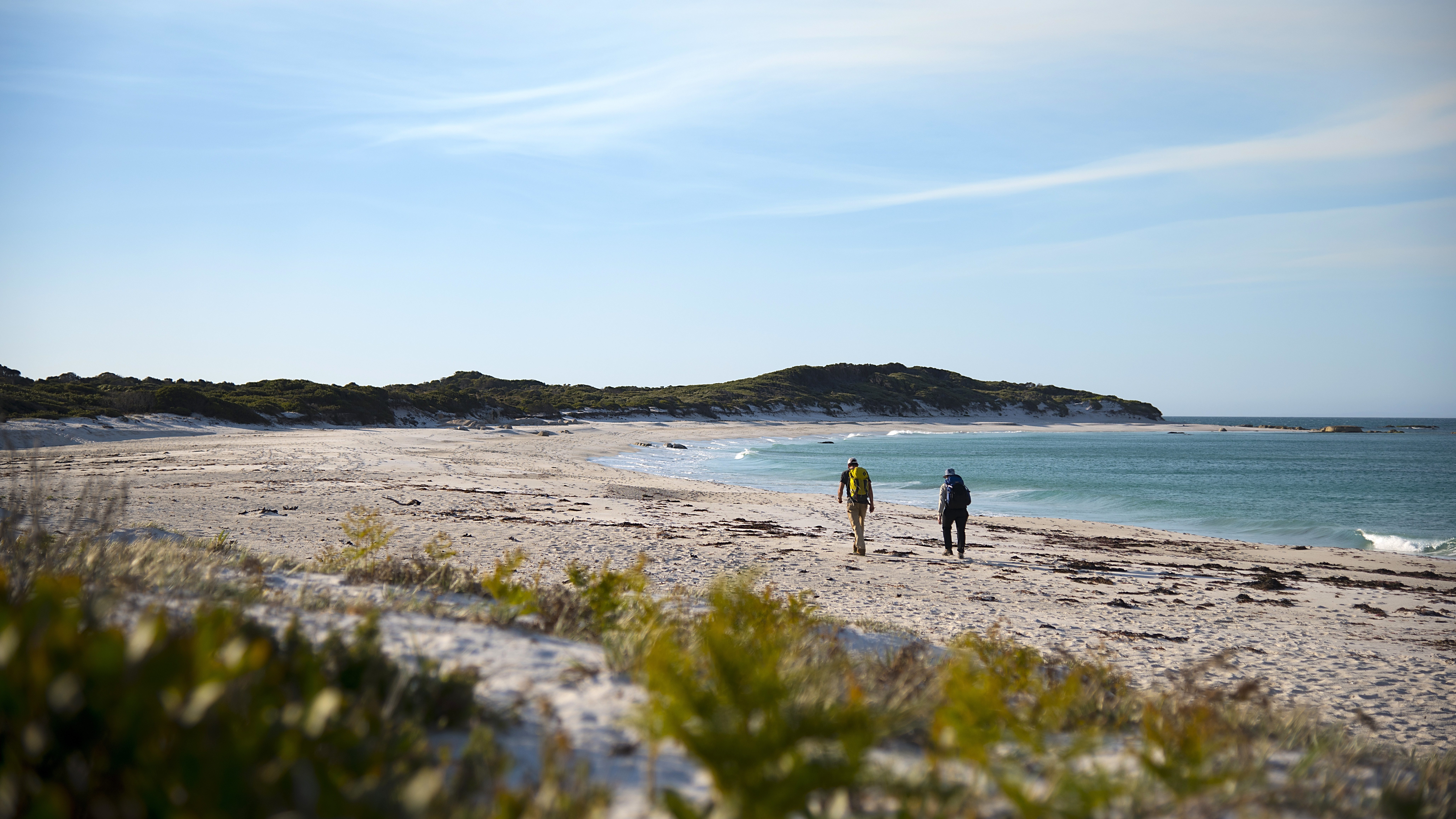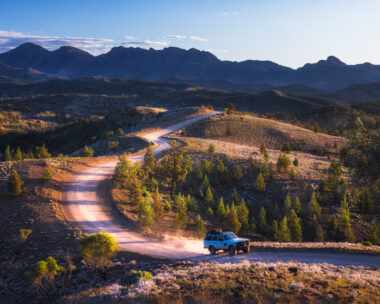As Carleeta Rose Helen Thomas pulls a shell necklace from its tiny basket, it unfurls like an iridescent serpent. Carleeta, a guide for the Aboriginal-owned and led wukalina Walk, is showing us a string of maireener (rainbow kelp) shells, given to her by Tasmanian environmentalist Bob Brown. It’s long enough to loop around her neck twice. It’s also a gift so precious she can barely stand to wear it.
And by the time I complete the four-day walk, from wukalina/Mt William in the north-east to larapuna/Eddystone Point, book-ending the Bay of Fires, I’ll fully understand its significance.
For the shimmering necklace is a thread linking modern-day Tasmania to countless generations of Aboriginal women. Carleeta’s ancestors have waded into the sea at low tide for hundreds of years, to pluck the shells off kelp before treating them to reveal that lustrous nacre. Shell necklace-making is among lutruwita/Tasmania’s oldest continuing cultural practices.

Natural wonders and aboriginal crafts
As the dual place names suggest, Aboriginal Tasmanians are reclaiming their culture (the state government has assigned 28 official Aboriginal and dual place names). Some of these names are palawa kani – a modern, constructed language written in lower case that’s based on Aboriginal languages once spoken here.
The many misconceptions about Aboriginal Tasmanians include the myth that Truganini was the last when she died in 1876.
Before we leave Launceston to be dropped at the base of wukalina (nicknamed Bill’s Hill because it’s just 216 metres high), we feel the strength and warmth of this resurgent culture.
At a community centre where portraits of elders past and present watch over us as we pare our packs to reduce the weight, we tuck into tea and homemade scones with our guides and support crew and share a few laughs.
The multi-day walk starts with an amble to wukalina’s summit where my phone beeps with a last message before we hike into a mobile reception blackspot.
It’s such a clear day that our guides joke about waving to relatives over on the islands in Bass Strait’s Furneaux Group. It’s then a flat but tough hike to our coastal base camp, tucked so discreetly among silver banksias that anyone strolling along the beach wouldn’t suspect it’s there.
The stunning timber-lined half-dome living room, cradled within a box of charred silver-top ash, was inspired by traditional shelters. Its dramatic curves are echoed in the sleeping huts.
We’re here for two nights before heading to the keeper’s cottage at the larapuna/Eddystone Point pink granite lighthouse for an overnight stay but it’s the quiet moments back at camp that I treasure most.
Here, Carleeta shows us how to pierce shells with a seam unpicker so that they can be threaded into a bracelet, and how to shape and dry bull kelp into a water carrier.
Shell art is just the beginning in Tassie
Her lessons influence what I seek out on my post-hike jaunt around the state. At Launceston’s Queen Victoria Art Gallery, I’m transfixed by luminous strands of king, blue, green and stripy maireener shells. Also on display is a necklace – probably owned and worn by Truganini – of black crow shells likely sourced from Bird Island off truwana/Cape Barren Island in the Furneaux Group.
Inside Hobart’s Tasmanian Museum and Art Gallery (TMAG), information panels detail how the shells are treated to expose their pearly layer before being polished with muttonbird oil (Carleeta is a keen mutton-birder and works the season each April on Big Dog Island between truwana and Flinders Island).
Traditionally, shells were pierced with a bone point or kangaroo’s eye tooth before being strung onto animal sinew or twine. TMAG also houses a poignant gallery dedicated to the extinct Tasmanian tiger.

The island is filled with art and objects that move you in every way. You could spend a day exploring the high-concept exhibitions in the subterranean galleries of Mona (Museum of Old and New Art) in suburban Hobart or, head to Sheffield near Devonport to discover why it’s known as the town of murals.



